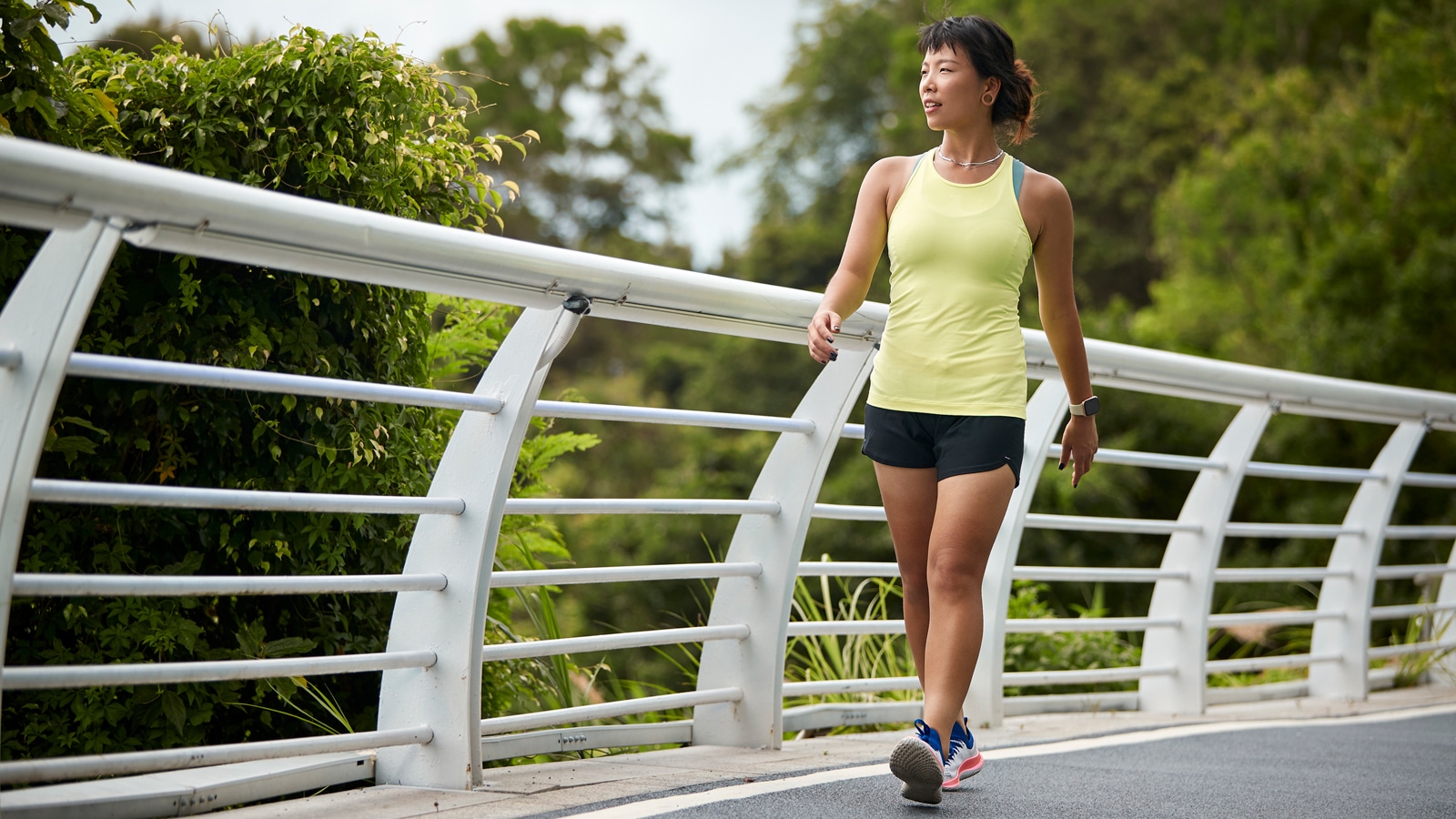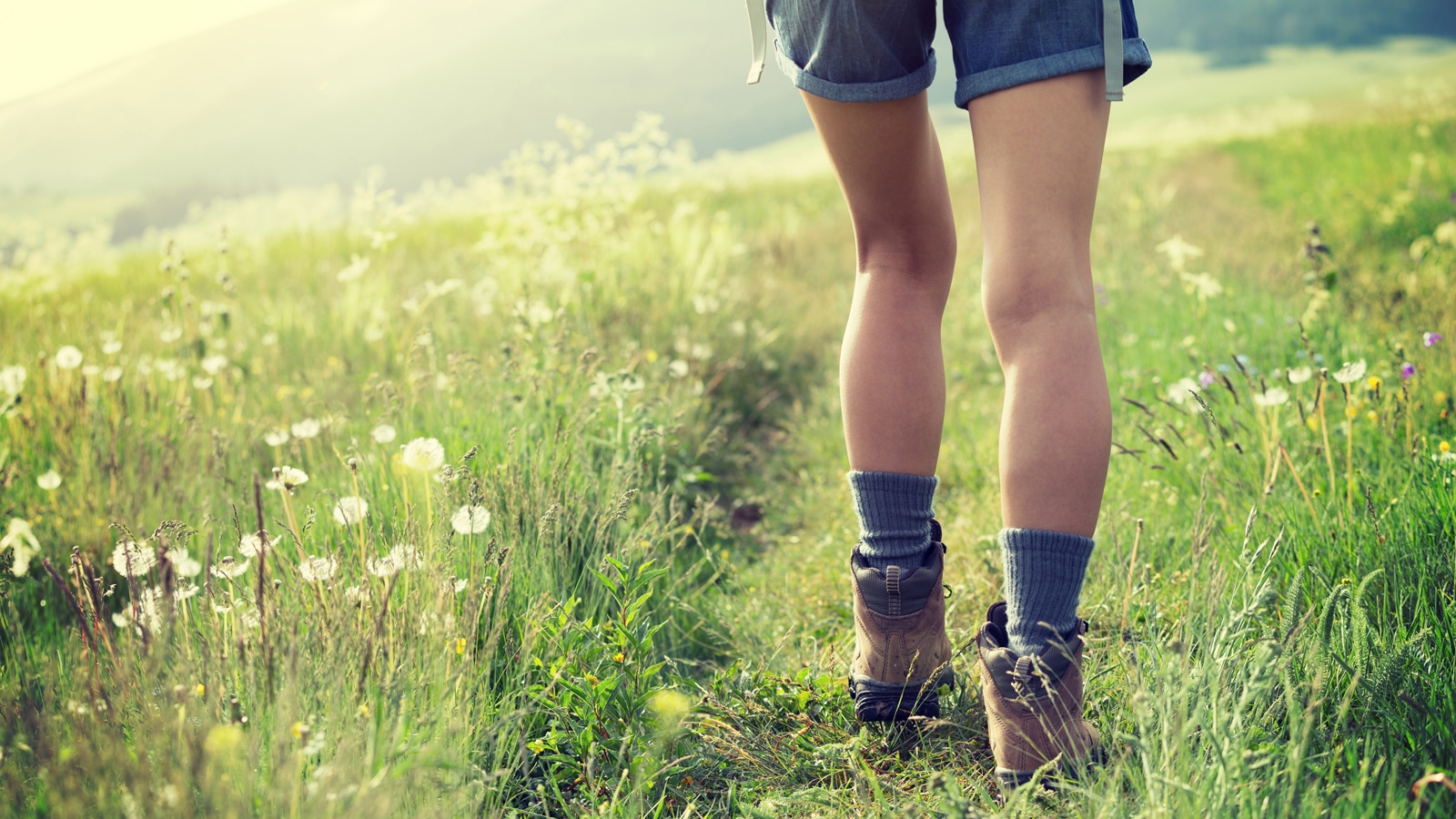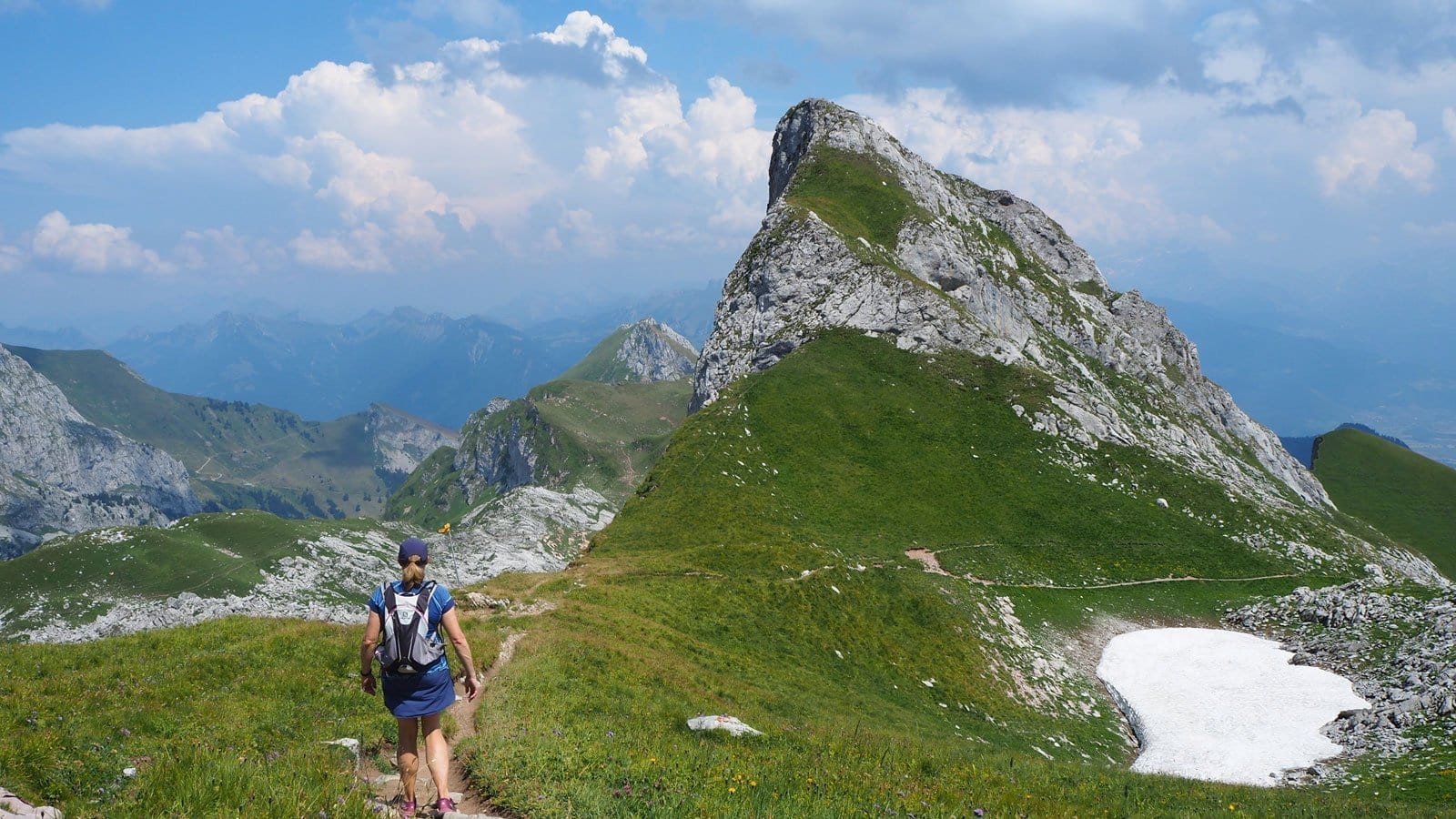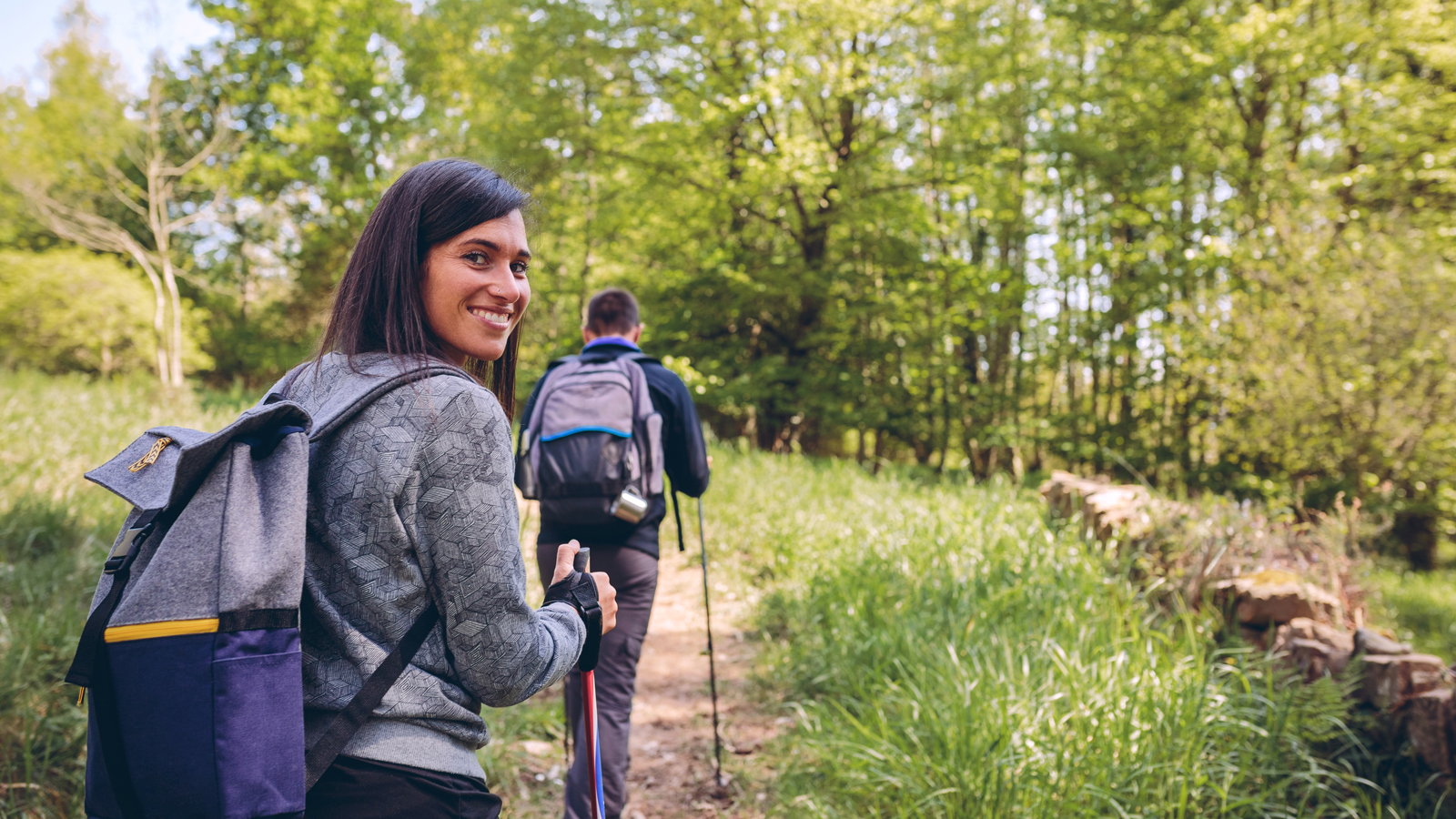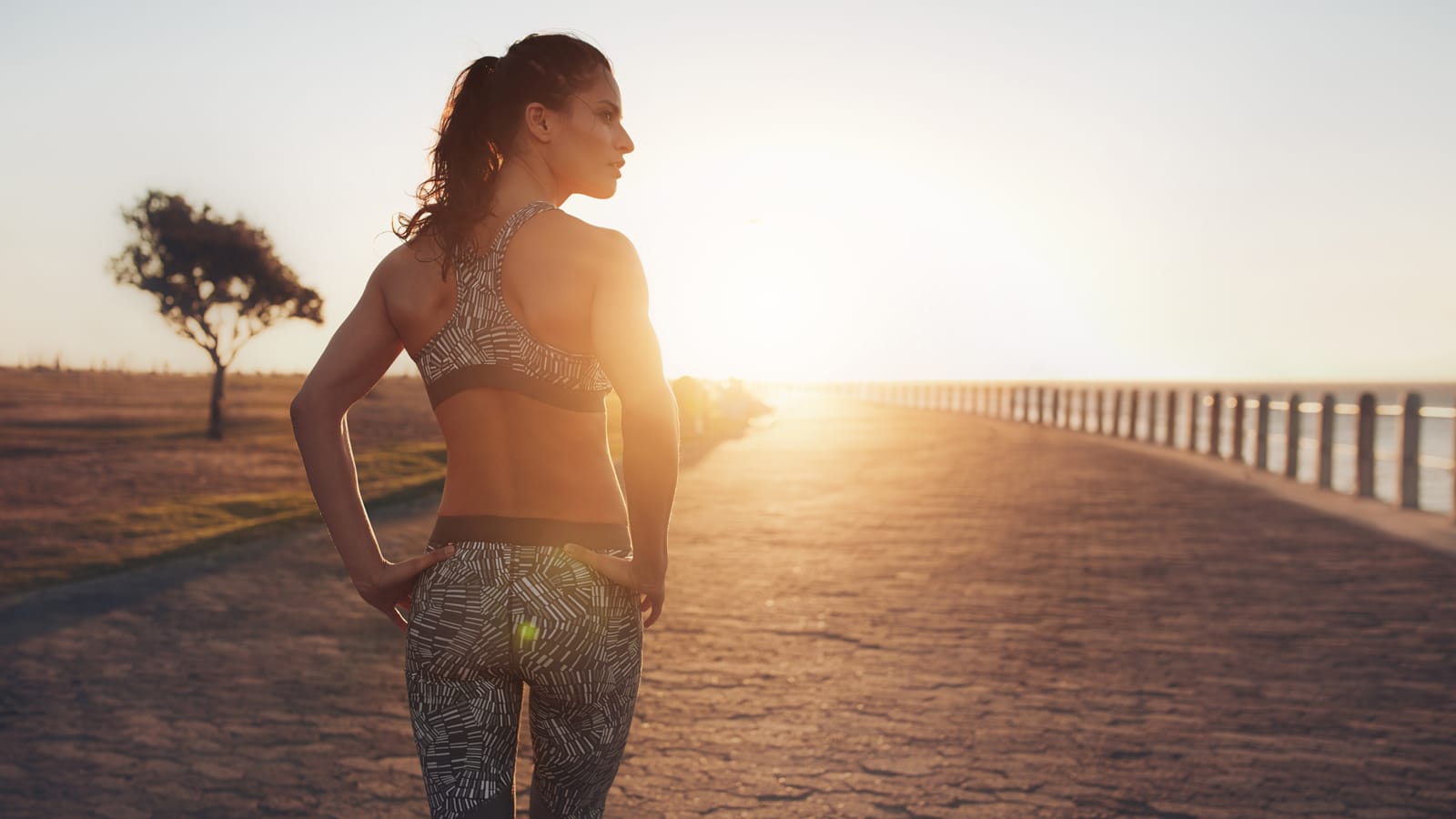Trekking Training: Top Tips To Prepare For Your Trek
You can always show up for your trekking trip without any training, but preparing for your trek will make it far more enjoyable.
Climbing over high passes, balancing over scree slopes, and carrying a backpack are just some of the challenges that you’ll face on a trekking trip. It’s better to be prepared and ready for long days, sore legs, and black toenails!

How Do You Train Your Body For Trekking?
Trek training needs to cover 3 areas: overall muscular strength for uneven and demanding terrain, cardiovascular fitness for the challenge of hiking in mountains at altitude, and stamina to cope with spending hours on your feet.
How you train will depend on where you live. If you can access mountain climbing areas, you can spend your weekends hiking up and down hills.
If you live in the flatlands, training will make the most of the gym for strength training and use incline walking on a treadmill to mimic steep ascents.
Your training program needs to reflect the conditions you’ll encounter on your trek. This could be walking on technical trails where there’s a risk of spraining ankles or hiking downhill on steep knee-busting descents.
Confused by the difference between hiking and trekking? Find out what is trekking…
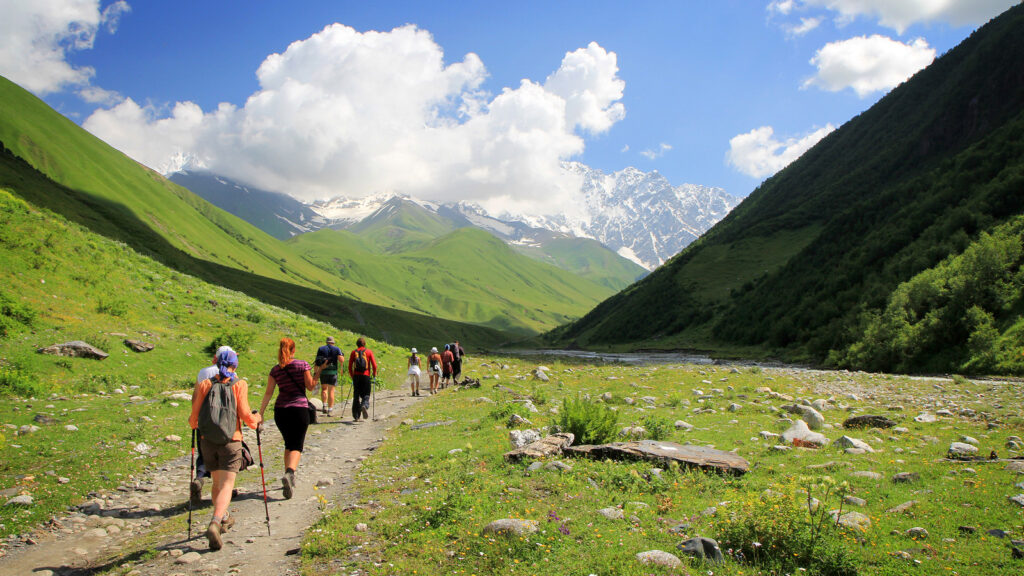
Trek Training Sessions
There’s a big difference between a low-level trekking holiday where you’re just carrying a small day pack and challenging treks with heavy packs and high elevation gains. The detail of your training plan should reflect the expected conditions on your trekking adventure.
Low-Level Trekking
If your trek is mainly on trails with minimal elevation gain and you’re carrying a light pack, training sessions should focus on aerobic endurance.
Follow a walking plan and build up to walking one hour a day. Your starting point will depend on your current fitness level. The aim is regular sustainable walking – you don’t want to get injured before your trip.
Once or twice a week, go for a longer hike. Gradually increase the length of your hikes until you’re able to walk all day.
Add bodyweight exercises 2 or 3 times a week to work on your overall strength and use a wobble cushion to build strong ankles.
Mountainous Trekking
For a more challenging trek, you’ll need good aerobic fitness, strong core and leg muscles, and tons of stamina. The following training tips will make sure you’re ready for your trekking adventure…
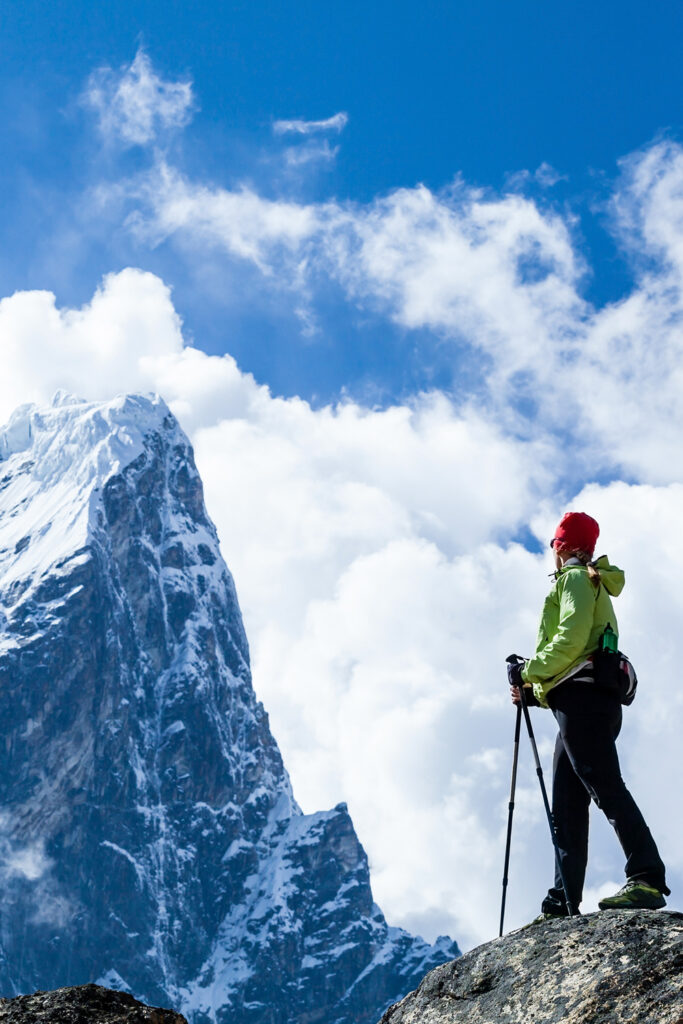
The Best Trek Training Tips
These tips will help you train for a challenging trek.
Increase Endurance With Aerobic Exercise
Cardio exercises will be key for improving your aerobic fitness and endurance. The fitter you are, the easier it will be to keep going in the thin air of steep mountain passes.
Any exercise that gets your heart rate elevated will help to improve your aerobic fitness. Aim for 3 to 4 aerobic exercise sessions a week: running, brisk-paced walking uphills, cycling or mountain bike riding are all good options. Or make use of cardio machines in the gym.

Hike In The Mountains (If Possible)
To survive long days of trekking in the mountains, try and find ways to replicate similar conditions in your local area.
If possible spend your weekends carrying backpacks in your local mountains. Gradually build up your hiking distance and hours on the trail. Stay safe with these hiking tips for beginners.
Seek out steep climbs and get used to carrying a pack. As you get fitter and stronger, make sure your pack gets heavier. Or try mountain running.
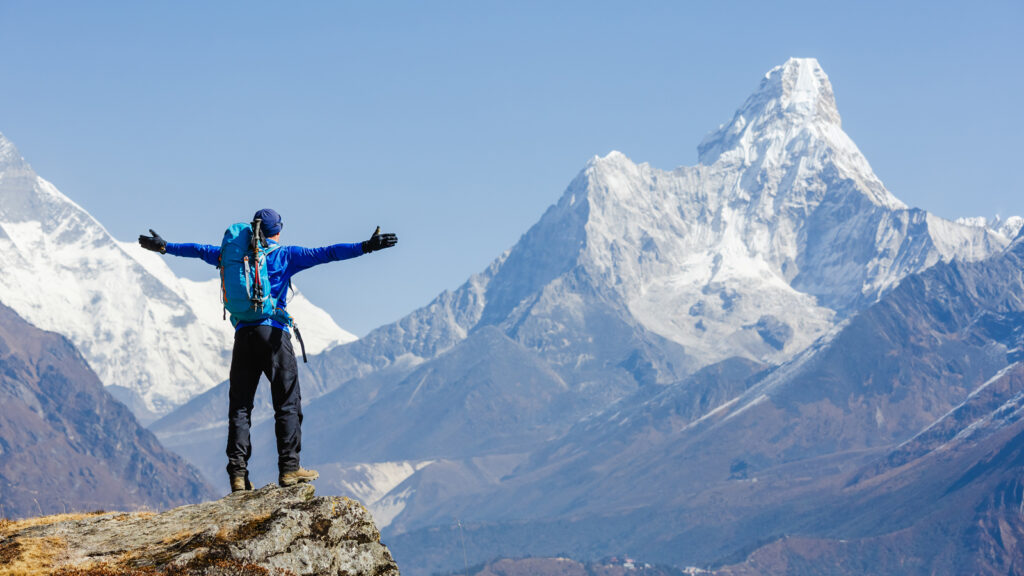
Alternatives For Flatlanders
If you live in the flatlands, improvise!
You can still walk long distances in your local park carrying a pack or walk with a weighted vest. Use the treadmill incline in your local gym or the Stairmaster to get some climbing in your legs.
Some city-based trekkers train by stair climbing up high-rise buildings – but give your knees a rest by getting the lift back down!
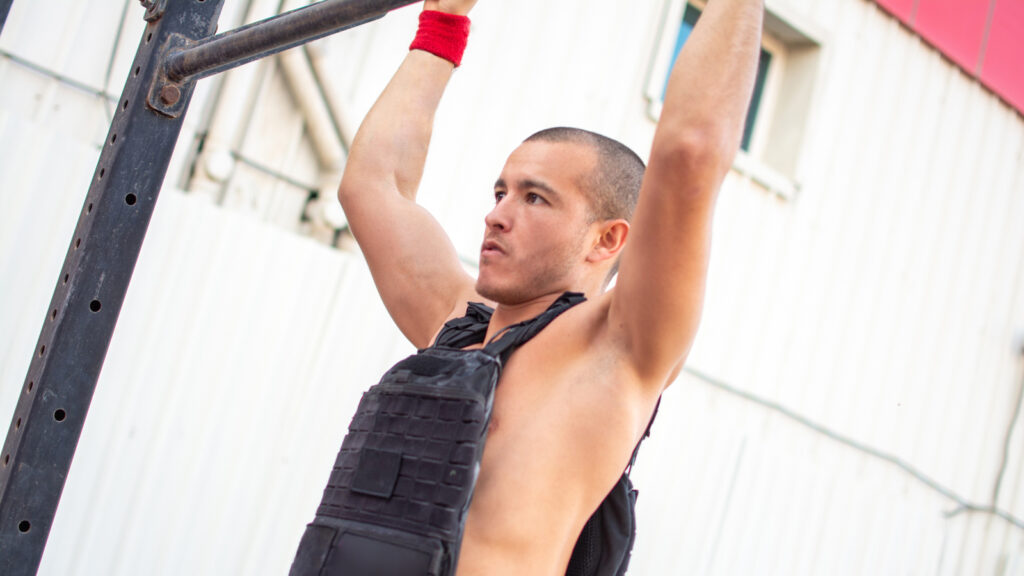
Strengthen Your Core
If it’s a backpacking trip with heavy packs, you’ll need strong core muscles: postural muscles, and spinal stabilizers to have the stamina to carry a heavy load comfortably for long distances.
Even the lightest pack on a fastpacking trip will feel heavy by the end of the day. Back pain is a common ailment when you’re trekking but core-strengthening exercises can get you ready for trekking.
A strong core will help with movement over uneven terrain where you’re constantly stabilizing your body to maintain balance.
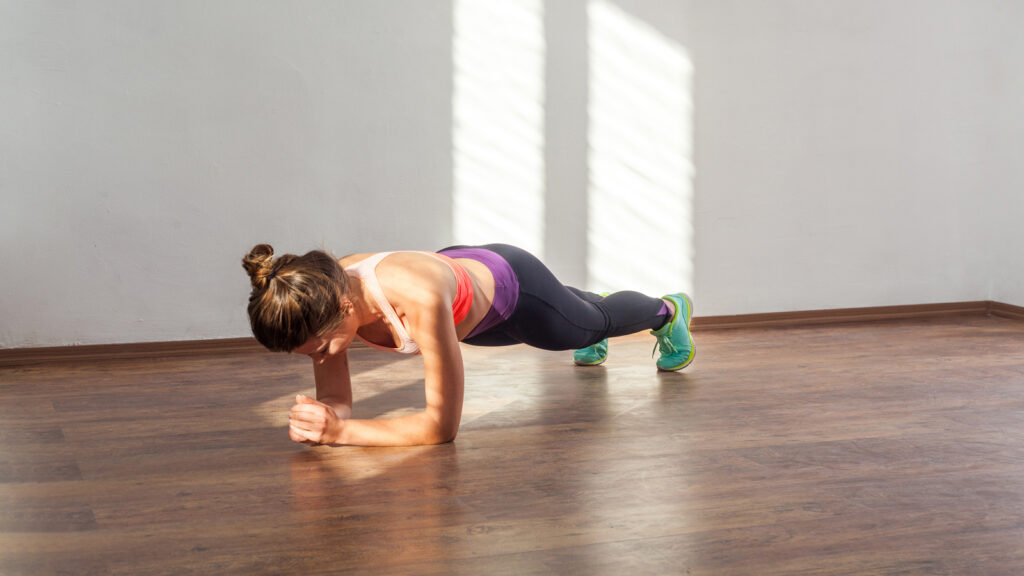
Core Strength Exercises
For good core strength, it’s important to work on all areas:
- Isometric exercises to make you strong such as planks, side planks, side plank leg lifts, dead bug holds and bird dog holds.
- Rotational exercises to control movement such as sit-ups & crunches, side bends, supermans, and back extensions.
- Anti-rotational exercises to resist external forces such as single-leg glute bridge, shoulder taps, and bird dogs (same side arm/leg).
Build Leg Strength with Weight Training
Just as important is training to build your leg strength. Load carrying puts a lot of weight on your lower body, especially your knees when going downhill.
Plus you’ll need strong legs to power yourself up the climbs and cope with clambering through boulder fields, descending screes, and crossing rivers.
Trekking will work every single leg muscle: your quad muscles, hamstrings, adductors, glutes, and calves. You can prepare for your trek by using weight training and bodyweight exercises to improve your leg strength.
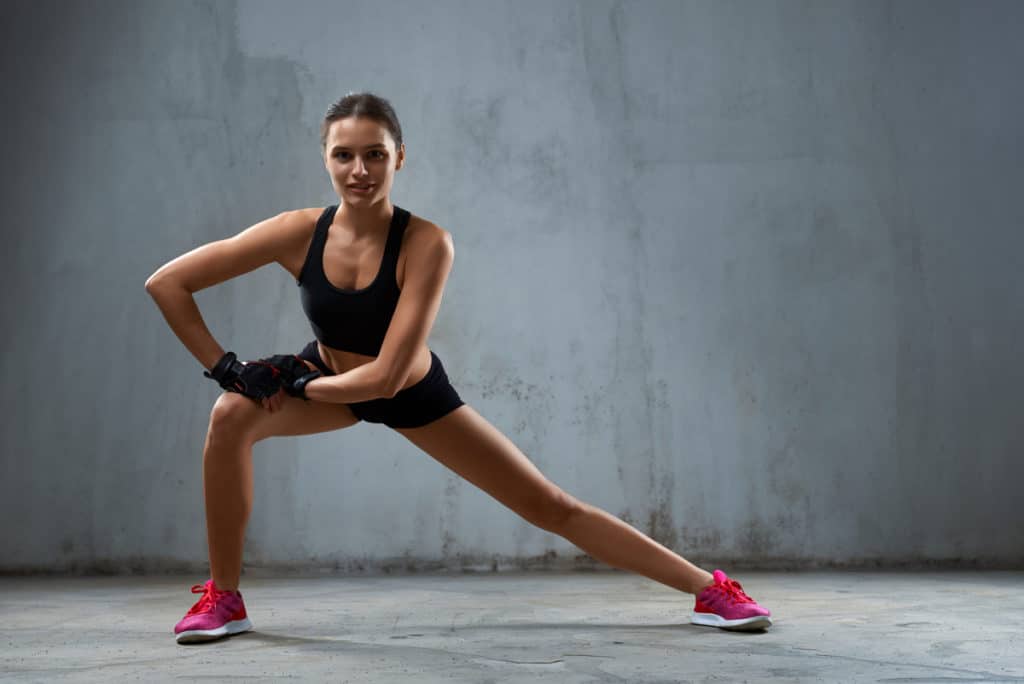
Best Leg Exercises
These are some of the best leg exercises for trekking:
- Step-ups and lateral step-ups. As you get stronger use dumbbells or a weighted pack to make your muscles work harder.
- Lunges and split squats: forward lunges, reverse lunges, lateral lunges, split squats. Build up to walking lunges with dumbbells and even Bulgarian split squats. Don’t push too hard too soon – the aim is to build strength and not get injured.
- Squats: Start with basic squats. As you get stronger use dumbbells for a harder workout or even single-leg squats. Again be careful to work within your ability level.
- Glute bridges and single-leg glute bridges.
- 90 90 push-backs.
- Single calf raises.
Get some ideas with these bodyweight exercises – they apply just as much for trekking and hiking.
Build Strength In Both Legs
It’s important to work on each leg. If all your exercises work both legs together – for example basic squats, you can be favoring one leg over the other. This will mask muscle imbalances.
When you’re trekking, you use your legs individually – obviously, both legs need to be equally strong. If you have one weak leg and one strong leg, your walking will be inefficient and there’s a higher risk of injury.
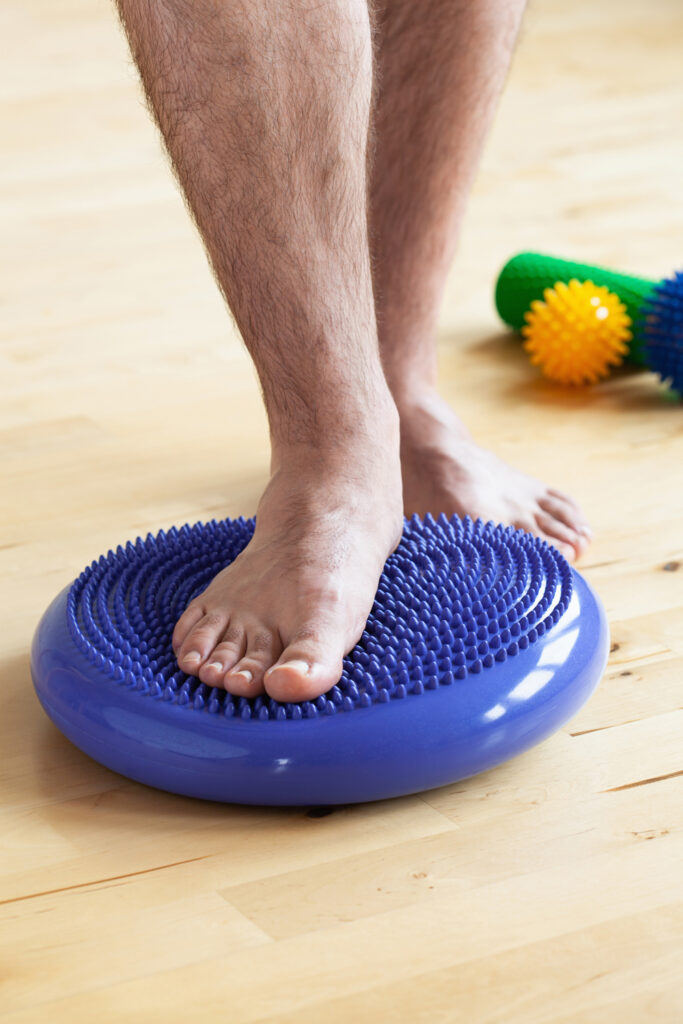
Improve Your Ankle Strength
The biggest weakness for most trekkers is their ankles. The best tip to train for hiking and trekking is to get those ankles strengthened.
Use a wobble cushion to build up your ankle strength. These cushions are cheap to buy and every runner or walker should have one.
Practice standing on the cushion one leg at a time and see how long you can last. When it seems easy – try with your eyes shut!
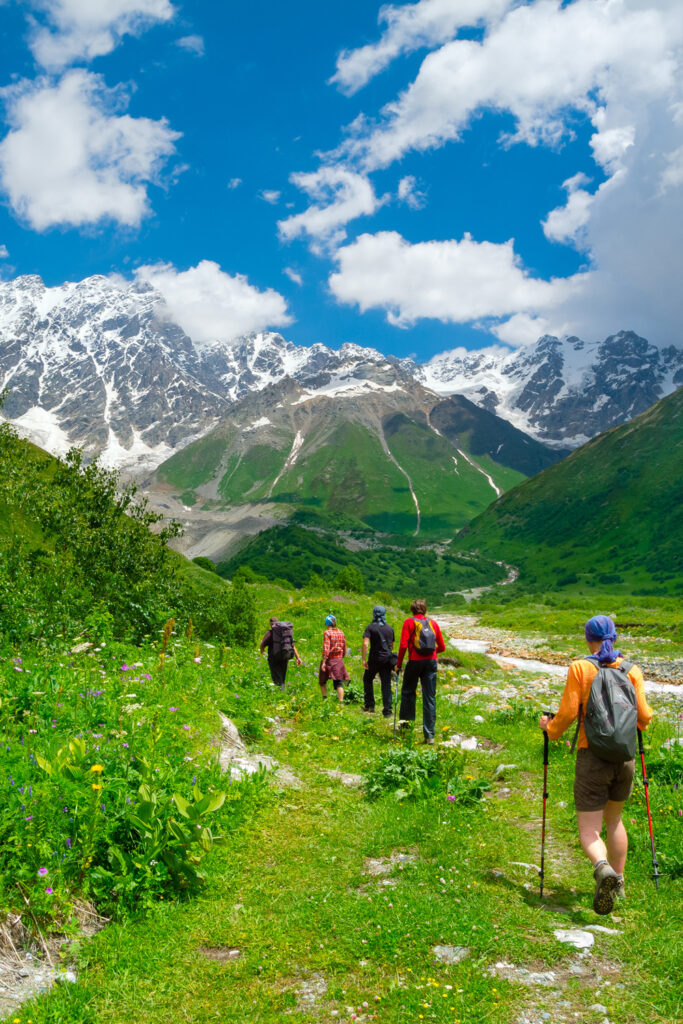
Practice With Trekking Poles
Hiking with trekking poles can make a huge difference, especially if you’re prone to knee aches and pains.
Walking poles can take up some of the strain of downhill hiking and used properly can help you power up the ascents.
Find out more about using walking sticks.
Workout Your Upper Body
Pack carrying and using trekking poles requires a strong upper body. You’ll get stronger with practice but you can also incorporate exercises that work your upper body into your training.
Workout in the gym or visit a climbing wall. Climbing works your lats, biceps, and forearms along with your core and legs – so it’s a great way to get strong for trekking.
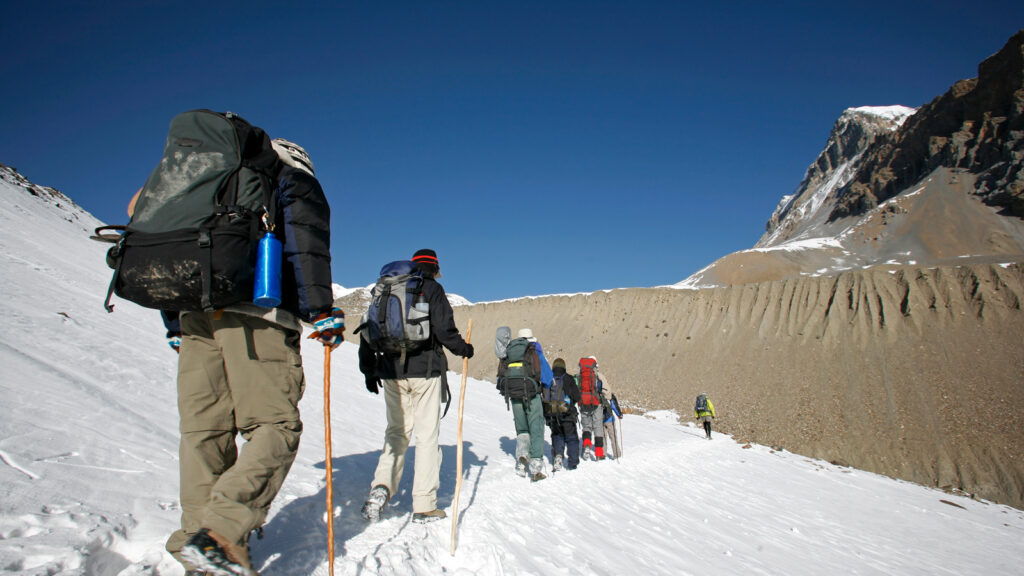
Work On Your Anaerobic Fitness
Power and the ability to react quickly can be important when you’re trekking. You never know when a yak might take a dislike to you!
Interval training, jumping jacks, burpees, and box jumps are all good ways to improve your explosive power.
Break In Your Hiking Boots
Some people prefer hiking boots and others will trek in trail running shoes. The choice is down to personal preference and the strength of your ankles.
When you’re choosing your footwear, look for comfort, stability, and superb grip. Always break in your footwear before your upcoming trek.
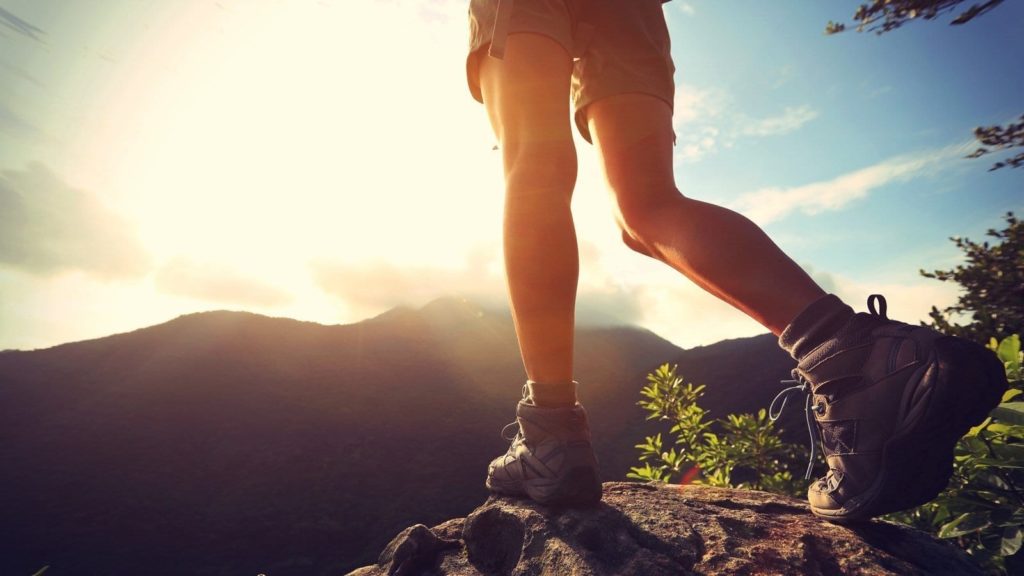
Walk In All Weather
Trekking doesn’t stop when the weather gets bad. Venturing outdoors in all kinds of weather conditions is part of the adventure.
When you train for hiking, it’s important to get used to walking in the rain, wind, heat, and even snow. Practice keeping cool and staying properly hydrated in hot and humid weather. Or keeping warm with adequate thermal layers when it’s cold.
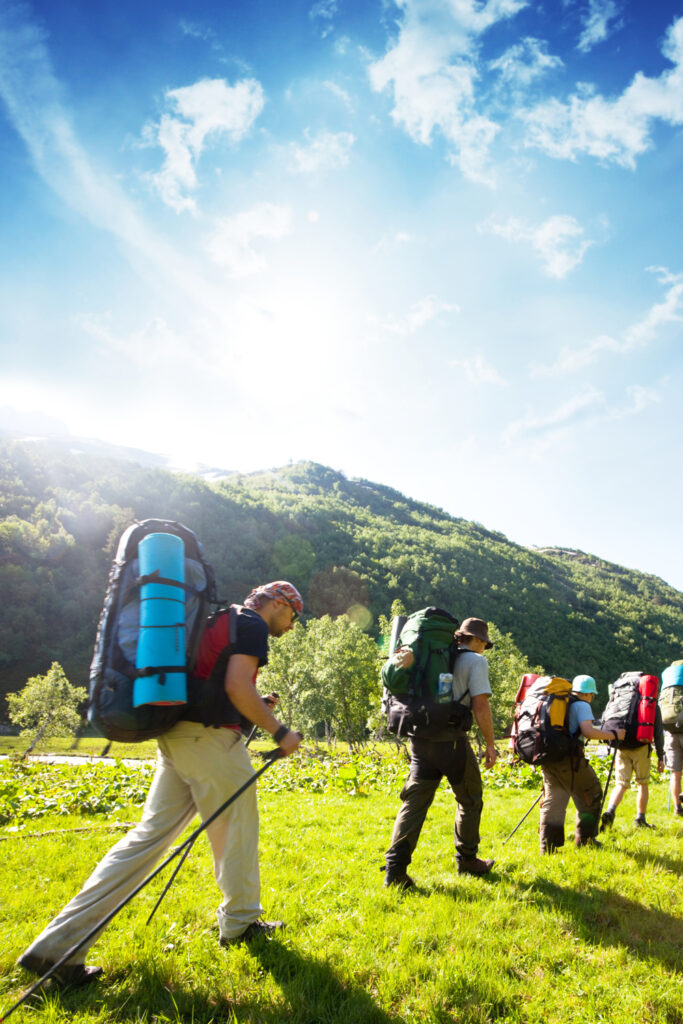
Train With A Backpack
Practice carrying your backpack before your trip. Get used to the weight and check that your backpack fits correctly and comfortably on your back.
Any rubbing now will become a major issue on a long trek – so find ways to make the pack comfortable or invest in a new one.
Walk In Different Trail Conditions
If possible, part of your physical preparation should be hiking on different surfaces. It’s doubtful you’ll be trekking on flat, level paths, so mix up your hikes.
Seek out steep descents, boulder fields, boggy ground – any conditions that match the terrain you’ll encounter on your hike.
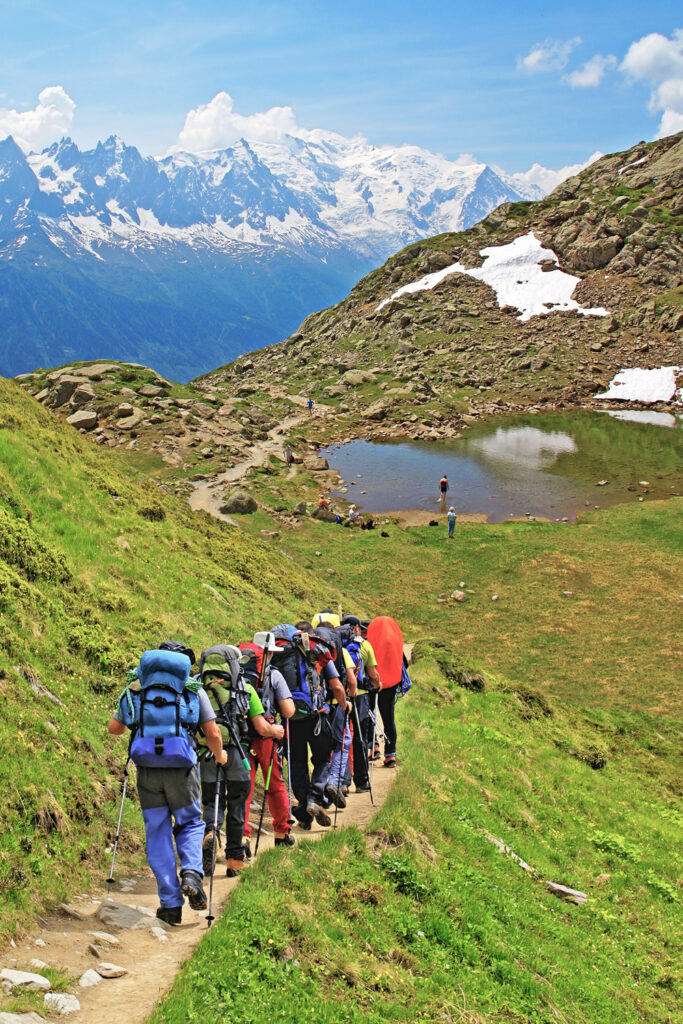
Plan Your Trekking Food
If you’re not used to eating while you hike, it’s something you need to practice. For long days of trekking, it’s important to refuel.
Everyone has different food preferences so try a variety of trail food and find out what works best for you when you’re hot and tired on the trail.
And Your Hydration
It may be enough to just drink water on short cooler hikes, but for long days in hot weather, you’ll need to plan your rehydration.
Try out different water systems such as bladders, water bottles and soft flasks, and different electrolyte tablets and powders. Nail down what works best for you.
Avoid Blisters
Blisters can ruin a hike. Educate yourself in blister management and avoidance.
- Make sure your footwear fits correctly and the laces aren’t too tight.
- Tape hotspots and tape pre-emptively.
- Try and keep your feet dry.
- Carry extra socks.
- Wear non-waterproof footwear – waterproof boots make your feet sweat.
- Make sure you know how to treat blisters and carry a personal blister kit.
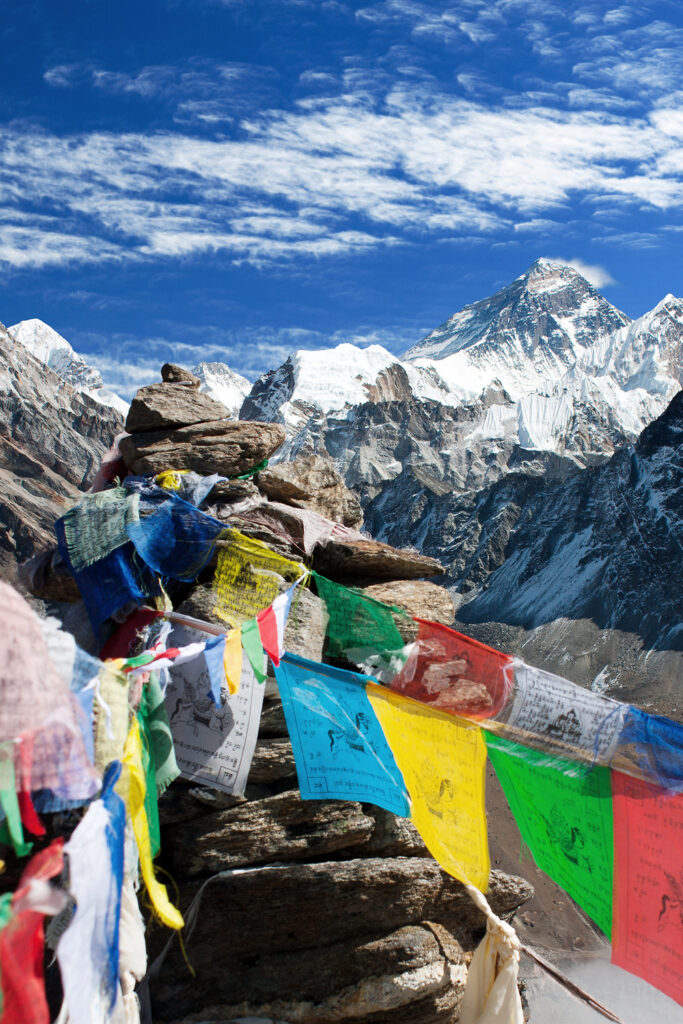
How Can You Increase Stamina For Trekking?
Stamina is both physical and mental. Strength training and gradually building time on your feet will help with physical stamina.
Mental stamina comes from preparing your mind for long days on the trail. Visualization can be a useful technique:
- Take some time to sit still in silence and focus on what you want to achieve on your trek.
- Rehearse in your head how you’ll deal with difficult situations, such as long ascents or extreme weather conditions.
- Visualize how you’ll stay motivated, even when the going gets tough.
It can help to compartmentalize how you’re feeling on a trek. Acknowledge thoughts of tiredness and sore muscles and make a conscious decision not to think about them. Instead, think about something positive.
It could be the beauty of nature, chatting with companions on the trail… anything that distracts you from opening up that compartment of pain and tiredness.
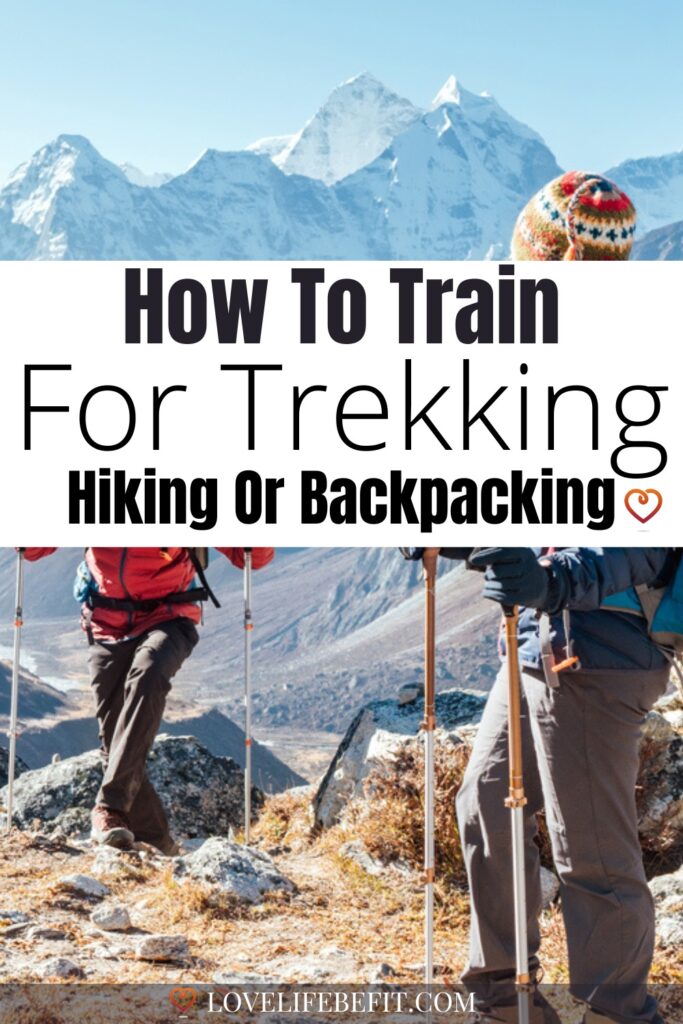
Thoughts From Love Life Be Fit
A training program for trekking needs to be tailored to match your specific trek. If it’s a gentle trekking holiday, walking regularly will get you in shape for the trek.
For a challenging trek, you’ll need to be strong with good stamina. It’s best to get experience before taking on a big hike. Start with small weekend adventures before building up to a major trek in a remote mountainous area.
Trekking can be a wonderful experience. Some of the best adventures in my life have been carrying a pack in mountains inaccessible except on foot. Thru hikes and climbing mountains provide magical memories.
Start training now and remember to enjoy the build-up as well as the adventure.
